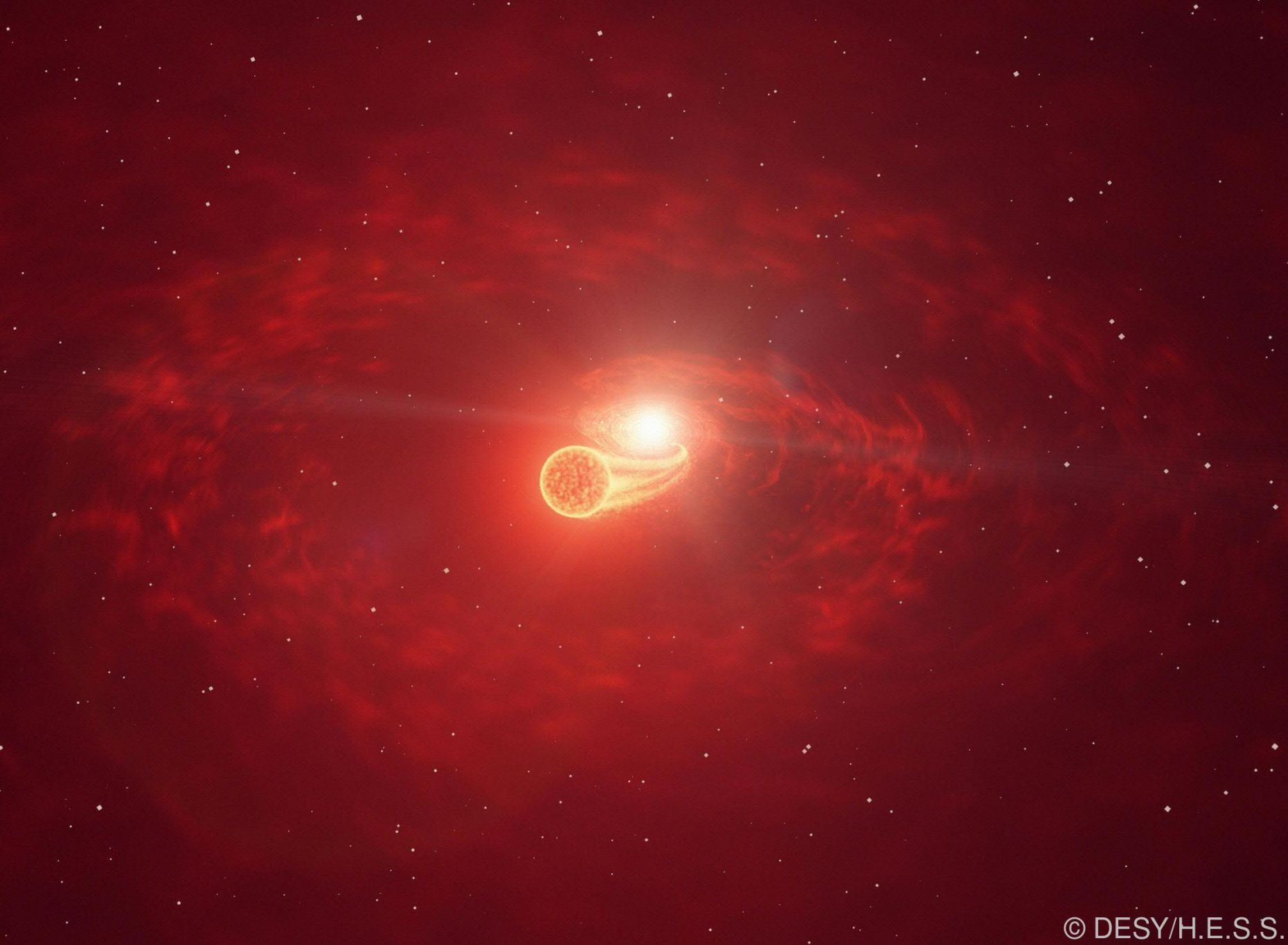Reaching the limit: Highest energy in double star explosion
If a white dwarf in a binary star system sucks a lot of matter from its companion star, a thermonuclear explosion - a "nova" - can occur. During such events, particles can be accelerated into the gamma-ray range. A team of researchers with Austrian participation has now observed the acceleration of particles with the highest energy so far in a nova, it was even at the theoretical limit, they report in the journal "Science".
Sun-like stars inflate into red giants at the end of their lifetime before collapsing into a white dwarf. These small, very compact old stars still have a very high surface temperature, but only a very low luminosity, because all nuclear fusion has already ceased for lack of fuel.
However, if such a white dwarf is part of a binary system, it can collect matter from its nearby massive companion star. If the amount of hydrogen absorbed reaches a critical value, an explosive hydrogen burn occurs on the surface of the white dwarf. This not only leads to the old star lighting up. The shock waves generated by such a nova can also accelerate particles into the gamma-ray range, as we know from observations with the Fermi Space Telescope.
Explosions every 15 to 20 years
Novae of a star can occur repeatedly at regular intervals. This is the case, for example, in the double star system "RS Ophiuchi" (RS Oph), where such explosions occur every 15 to 20 years. "During the last outburst of RS Oph in 2006, no gamma-ray telescope was in orbit," Olaf Reimer of the Institute for Astro- and Particle Physics at the University of Innsbruck explained in a press release.
In August 2021, an amateur astronomer discovered a new outburst of "RS Oph" in the optical wavelength range and alerted the astronomers. The astronomers immediately pointed their telescopes and observatories at it and were able to study the phenomenon in detail from space and from Earth over a longer period of time - for example with the H.E.S.S. telescopes in Namibia.
These have been operated for 20 years by an international collaboration, of which Austria has also been a member since 2009. Reimer heads the H.E.S.S. working group at the University of Innsbruck. The telescopes are named after the Austrian physicist and discoverer of cosmic radiation Victor Franz Hess. They measure gamma rays, which produce a large number of charged particles when they enter the Earth's atmosphere. These then emit visible light via the so-called Cherenkov effect, which is registered by the telescopes.
Limit of the possible reached
The data obtained with the H.E.S.S. telescopes have shown amazing things, explained Reimer. For example, particles were observed that had energies several hundred times higher than had ever been measured before in novae. With the energy released, protons and heavier nuclei were apparently accelerated highly efficiently to energies in the giga and teraelectron volt range. According to the researchers, the limit of what is possible was thus reached - according to the theoretical models, more is not possible for such situations.
The scientists were able to follow the eruption of "RS Oph" almost in real time through repeated observations at short intervals and thereby gain insights into how cosmic explosions work. They detected high-energy gamma rays up to a month after the explosion. Novae could thus contribute to the ubiquitous cosmic radiation.

